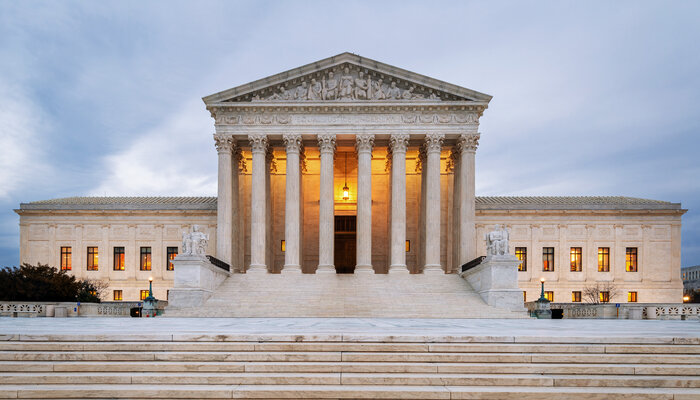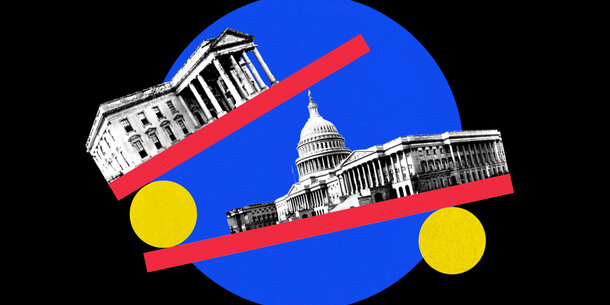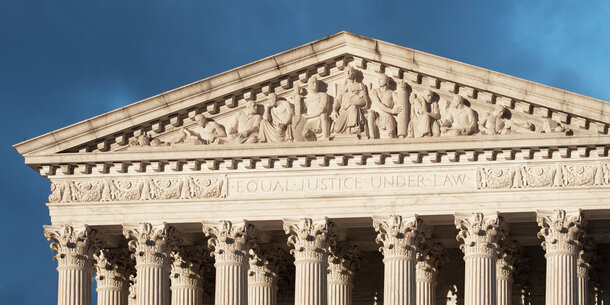The Supreme Court begins its new term on October 3 and will soon consider critical questions about the future of fair elections, affirmative action, and more. While there’s much we don’t know, one key data point is what we’ve learned over the last year. The blockbuster Supreme Court term that ended in June was the first full-year opportunity for the 6–3 conservative supermajority to wield power. It frequently did so in radical ways.
Here’s what we learned about the Court’s behavior — and what to watch for in the upcoming term.
Disregarding Precedents
Adherence to precedent is a guiding principle of judicial decision-making. It promotes fairness and stability in the system for judges to ground their rulings in what came before. But the supermajority has shown little regard for this principle.
Dobbs v. Jackson Women’s Health notoriously disposed of the constitutional right to abortion recognized half a century ago in Roe v. Wade. The dissent likened the majority’s “departing from stare decisis for no legitimate reason” to a “loaded weapon” that threatens respect for the Court and the rule of law itself. Troublingly, Dobbs was only one of many instances last term where this Court overturned precedent or limited past judgments so severely as to render them dead letters.
In Shinn v. Ramirez, for example, the Court trapped convicted persons who received constitutionally deficient legal representation in a catch-22: the ruling prevents them from developing evidence that they received ineffective assistance of counsel even though the very reason why that evidence wasn’t developed was because they received ineffective assistance of counsel. In doing so, the Court gutted two other recent cases that had found that these types of petitioners uniquely needed a chance to develop evidence.
And Kennedy v. Bremerton quietly overruled a test established in 1971 for discerning if the government unconstitutionally endorsed a particular religion, only asserting that the older case (Lemon v. Kurtzman) and its progeny had been “long ago abandoned.” The dissent observed that the majority haphazardly effectuated “fundamental changes in this Court’s Religion Clauses jurisprudence, all the while proclaiming that nothing has changed at all.”
Dobbs did correctly recognize that sometimes courts should depart from precedent, as the majority pointed to Brown v. Board of Education’s disavowal of state-sanctioned discrimination against Black people and abrogation of the Court’s blessing of segregation in Plessey v. Ferguson. But Dobbs and its ilk are no Brown v. Board. Here, the Court clawed back the recognized rights of historically marginalized people and did so in a way that left a wide array of constitutional rights and values vulnerable. Respect for precedent should be at its highest when democratic safeguards and the underpinnings of a modern pluralistic society protective of equal rights are at stake.
Deciding Issues They Don’t Need To, When They Don’t Need To
Procedural limits on how courts hear and decide cases are also an important value that encourages judicial restraint. Deference to the people’s elected representatives, and carefully considered intervention only if necessary to protect against a violation or to right a wrong, bolster the Court’s integrity and encourage public confidence. Last term the supermajority deviated from usual procedures in ways that expanded the reach of its decision-making power — and corresponded to the political, economic, and social interests of a rich, white, conservative minority with disturbing regularity.
For example, the Constitution empowers federal courts to issue rulings on “cases and controversies.” This has long been understood to mean these courts resolve real legal disputes and don’t offer anticipatory judgments about the legality of a possible action. Yet in West Virginia v. Environmental Protection Agency, the Court ruled on the legality of an Obama-era rule regulating carbon dioxide emissions that was neither in effect nor planned to go into effect. The dissent observed that “this Court could not wait — even to see what the new rule says — to constrain EPA’s efforts to address climate change.”
The supermajority’s reaching has been particularly pronounced in its aggressive use of the “shadow docket.” These cases are markedly less transparent and less conducive to informed decision-making than traditional merits docket cases, which is why their use has historically been limited to procedural matters and true emergencies. But this Court has dramatically increased its use of the shadow docket to issue orders with significant impacts.
Most notoriously, last term the Court allowed Texas’s abortion ban to go into effect via a one-paragraph unsigned opinion on the shadow docket, essentially abrogating a constitutional right for nearly 9 percent of the country’s population. This went too far for even Chief Justice John Roberts, whose dissent emphasized that the Court was resolving novel questions “in the course of two days, without the benefit of consideration by the District Court or Court of Appeals . . . without ordinary merits briefing and without oral argument.”
Doubling Down on Amateur History
Over the past term, we bore witness to the ascendance of originalism — a once-fringe method for interpreting the Constitution that has been applied by the justices to render rights and liberties inaccessible for most modern Americans. Originalism is the idea that the Constitution’s meaning is frozen at the time it was written. As applied by today’s Court, it deliberately defines rights in a way that denies them to large swaths of the population who have historically been targets of legal discrimination. And the Court showed far more interest in its version of history than centuries of intervening social progress, public interest, precedent, and reliance interests.
Dobbs again is a prime example. The opinion placed great emphasis on a contextless 18th-century scavenger hunt for evidence of a right to abortion and concluded that no such right is “deeply rooted in the Nation’s history and traditions.” Seemingly, if you could be legally compelled to give birth at some point in the country’s past, then that should be the case forever. Originalism was also used in New York State Rifle Association v. Bruen to tie legislators’ hands. The Court overturned a century-plus old gun regulation because it said it could not find an even older law that regulated guns in the exact same way.
Strict adherence to originalist ideology to the exclusion of other values harms Americans who had to fight for their rights.
• • •
It’s dangerous for the Supreme Court to rely on power rather than principle. Reasoned decision-making to protect Americans’ constitutional rights is central to public trust and judicial legitimacy. Justice Elena Kagan recently warned that judges forfeit that legitimacy when they appear to impose their own political preferences and overturn precedent simply because they have the numbers to do so. In the coming term, Court observers must remain alert and stand against continued radicalization.



